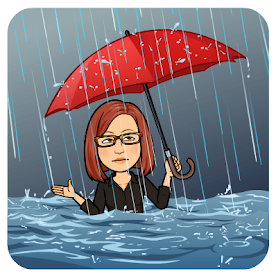Since we are in “high season” for natural disasters, it is a “teachable moment” to review some things to consider if you are the victim of nature’s wrath, an explosion, or any other damage to your property and are coping with financial losses and bills for temporary living expenses:
Call Your Insurance
Agent-
Ask your property and casualty agent about “fine print” in your homeowners
policy. All policies have very specific language about types of losses that are
covered (e.g., hurricane damage) and those that are not (e.g., flood damage and
business use of a home). Of course, policy deductibles (e.g., $500) apply
before any damage claims are paid.
Learn the Claims
Process-
Write down the steps to file a claim. Note that benefits paid will never exceed
the maximum coverage provided by a policy for a dwelling, other structures
(e.g., a shed), personal property, and additional living expenses.
Document Damage- Take photos,
before cleaning up, to document losses. Separate damaged and undamaged property,
but don’t destroy damaged items until a claims adjuster inspects them. If you
have material you would like to remove immediately, because it could be a
health hazard, ask your insurance agent for instruction.
Remain Available- Leave a phone
number (e.g., friend or family member’s house or cell phone) where you can be
reached by an adjuster or insurance agent if your home is uninhabitable or you
are evacuated to another location.
Protect Your Property- Avoid further
damage by making temporary repairs (e.g., putting a tarp over a damaged roof or
plastic over blown out windows). Save receipts for reimbursement. Even if
insurance doesn’t fully reimburse you, you may qualify for an itemized
deduction for federal income taxes (Schedule A) if losses are in a federally
declared disaster area,
Itemize Your
Losses-
Make a list of damaged articles and provide any other information that the
adjuster requests to process your claim. Ideally, you have a home inventory of
personal property and/or photos. Keep copies of information provided to the
insurance company.
Inventory Your Possessions- If you don’t have a home inventory, make one now to
provide evidence of property losses, if necessary. Store it away from home in a
bank safe deposit box or cloud storage. No special forms are needed. Simply
walk from room to room, listing all major items (e.g., appliances, furniture)
with serial numbers and/or other identifying information.
Reach Out for Help- Review the
settlement process outlined in your insurance policy. If you’re dissatisfied
with a proposed settlement offer, negotiate for a higher amount, submit the
dispute for arbitration, and/or consider hiring an attorney to represent you. If
post-disaster theft should occur (unfortunately, this sometimes happens),
report it to local police.
Prepare to “Grab and Go”- Assemble a
family “emergency box” that can be grabbed at a moment’s notice if you get “the
knock at the door” and are given just a minute to clear out. A list of items to
include can be found in this publication
from Texas A&M Agrilife Extension.
This post provides
general personal finance or consumer decision-making information and does not
address all the variables that apply to an individual’s unique situation. It does
not endorse specific products or services and should not be construed as legal
or financial advice. If professional assistance is required, the services of a
competent professional should be sought.






No comments:
Post a Comment